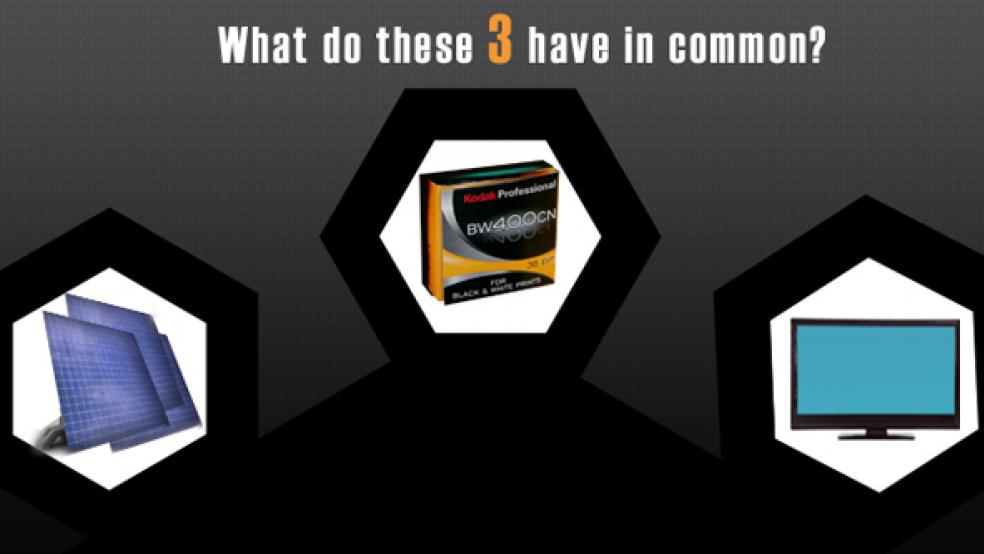With the volatility and complexity of the stock market these days, the trading of physical products: food, metals and electricity, known as commodities, became the rage, but what determines a commodity’s worth? Where does it come from? How much is in supply? How is it connected with our everyday lives? Prices have plummeted in the last few days. Should investors be worried? This is another in our commodities series. See other stories in the series here.
Quick: What do older photographs, plasma televisions and a rooftop photovoltaic solar panel have in common? All of these use silver, a metal whose importance may seem to have declined significantly in the last several decades, with the advent of digital photography and the reluctance of younger newlyweds to put silver settings on their wedding registries. But silver has been getting a lot of attention lately after the fear of a weak dollar drove the price up to $50 in the last days of April. It then lost nearly a third of its value as pundits predicted the bubble would pop and the dollar would gain strength. After rising a bit last Friday, then falling again — the latest hiccups in an eventful spring — the price of silver remains just above $33. Like its more treasured sibling, gold, silver is a “crisis commodity,” a blast-hardened shelter for those who fear financial meltdown. But there are a lot of reasons besides the apocalypse to pay attention to this also-ran of precious metals.
Why It’s Valuable
Investors jumping on the recent silver bandwagon viewed it as an affordable bulwark against fears of weak world currencies, said Jim Steel, a precious metals analyst with HSBC. “Gold gets expensive,” he explained, and silver is a way to store hard assets in a cut-rate package that has a few more industrial uses than gold. One fascinating note about gold and silver is that the historic price canyon between them doesn’t really reflect the amount produced by mines compared with demand from the public. The 1782 law that established an American mint said one ounce of gold would be coined per every 15 ounces of silver, a ratio that roughly conformed to European standards of value that went back to the first conquest of the New World and its silver mines by the Spanish in the 16th century. The market has expanded and compressed this ratio like an accordion ever since. The current price balance is about 43:1, whereas the rate of silver to gold production from today’s mines is closer to 9:1.
Ways to Invest
There are two popular investment vehicles for the average investor to buy silver. The first is silver coins struck by a number of mints around the world, such as the Royal Canadian Mint, the U.S. Mint and the Perth Mint. The second are the exchange traded funds, or ETFs, which are shares in a trust that owns a large stock of bullion. This relieves the average buyer of the hassle of shipping and storing the metal.
Why People Buy It
Among various motivations for buying silver, a big portion comes from doubt – either analytical or ideological -- about the value of the world’s currencies. Gold and silver have been favored investments for those who dislike the U.S. Federal Reserve or have suspicions about the durability of “fiat money” – that is, paper currency with no backing in precious metal. Gold and silver are hard facts, goes the reasoning. Their intrinsic value will always cross boundaries of culture, time and language, and, therefore, is difficult to manipulate by a government or bank. Plus, silver has an impressive backstory: The desire for silver essentially financed the Spanish conquest of Peru and Mexico. The conservative economist Milton Freidman once observed “The major monetary metal in history is silver, not gold.”
When to Sell It
One recent general rule of thumb among metals brokers is that when the price gets higher than $25 per troy ounce, people who pay attention to such things will start combing their households and going to yard sales in search of old cutlery and punchbowls that can be sold and melted down for reuse. The industry term is “scrap” and 215 million ounces of it found their way into the market last year, the highest in ten years of data, according to Michael DiRenzio, the executive director of the Washington, D.C.-based Silver Institute. “People are raiding their attics for silver cufflinks but it’s not anywhere near what it is for gold,” he commented. Enthusiastic stories in the press and a certain amount of “delusion” only fueled this spring’s run-up, as this video explains.
What It’s Used For
While silver nitrate film is rapidly becoming an antique and fewer American families are bothering with silver table settings anymore, new industrial uses of silver have picked up some of the lost demand. The use of silver in electrical contacts has risen somewhat, thanks in part to the use of silver paste in photovoltaic cells. It has extremely high thermal conductivity. Detroit is another medium-level consumer, with newer hybrid cars employing silver in features like seat adjustments, windshield wiper controls and navigational systems. These gains have been lukewarm, however. The total amount of fabrication has risen about 84 percent in the last two decades, according to a report commissioned by the Silver Institute.
No More Silver Coins
There is no country in the world that still uses silver as a base metal for coins, though the idea was discussed in Mexico as recently as 2005. Though the U.S. Federal Reserve does not keep bars of silver, and the U.S. Department of Defense got rid of its last silver stockpiles in 2004, central banks other nations still keep reserves, notably China.
Related Links:
Anatomy of Silver Manipulation – How Low Can it Go (Seeking Alpha)
Is Now the Time to Buy into Silver (Money Week)
Investors Stampede into Modern-Day Silver Rush (L.A. Times)



